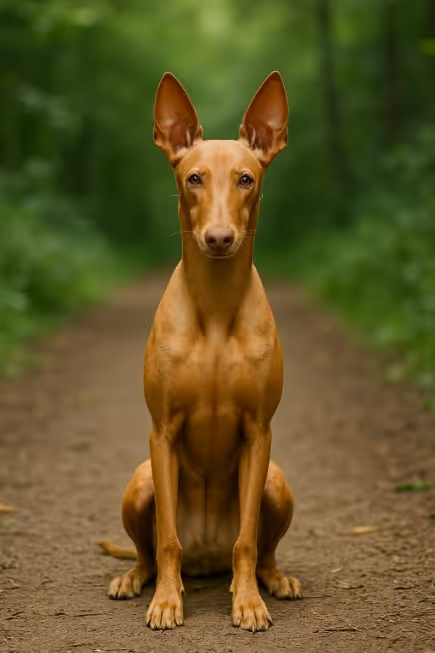The Cirneco dell’Etna is a slim, elegant primitive hunting hound from Sicily—light on its feet, affectionate with family, and keen-eyed for small game. With a short, low-odour coat and catlike cleanliness, Cirnechi (plural) are great for active apartments or houses. If you’re wondering “Are Cirneco dell’Etna good apartment dogs?”—yes, with daily exercise and enrichment. “Do Cirneco dell’Etna shed?”—lightly. “Are Cirnechi hypoallergenic?”—no, but they’re low-shedding. Expect a sensitive, biddable sighthound that thrives on kind training and secure off-leash options.

Native to Sicily—especially the volcanic slopes around Mount Etna—the Cirneco dell’Etna was developed over centuries to hunt rabbits and other small game in hot, rocky terrain. Selected for stamina, heat tolerance, and keen senses, the breed remained largely unchanged as a rustic farm and hunting companion. Today it’s recognized internationally (Hound/Primitive-hunting classifications) and valued as a graceful, athletic family dog that still loves to work.
A lightly built, square-to-slender hound with large pricked ears and a fine, close coat.
Minimal coat care—focus on skin, nails, and teeth.
A nimble, enduring athlete—plan smart, secure outlets.
Sensitive, clever, and people-bonded—keep sessions upbeat and short.
Lean fueling for a light-framed hunter.
Generally a healthy, long-lived breed—screen and manage like an athlete.
Rare in Canada—plan ahead and verify health/testing.
Are Cirneco dell’Etna good apartment dogs?
Yes—if you provide 60–90 minutes of daily exercise, enrichment, and consistent training.
Do Cirneco dell’Etna shed?
Lightly. Weekly brushing keeps the short coat tidy with minimal hair.
Are Cirnechi hypoallergenic?
No. They are not hypoallergenic, though they’re low-shedding.
How much exercise does a Cirneco need?
Plan for 60–90 minutes daily plus brain work (recall games, nose work, lure coursing).
Can a Cirneco live with cats or small pets?
Sometimes—with careful introductions and management. Prey drive is real; many will chase.
Are Cirnechi good off-leash?
Use caution—practice on a long line and choose fenced areas until recall is bombproof.
Cirneco vs Pharaoh Hound—what’s different?
Cirnechi are generally smaller/lighter, typically tan-only, and often a touch more sensitive/biddable; Pharaoh Hounds are larger with broader colour range.
Do Cirnechi bark a lot?
Usually moderate—more alert than yappy. Teach a reliable “quiet” and manage window/door triggers.
How do they handle Canadian winters?
They’re cold-sensitive. Use coats/booties, shorten outings in deep cold, and rinse road salt.
What health tests should breeders do?
Patellas, hips, and CAER eyes as a baseline; ask to see documentation.